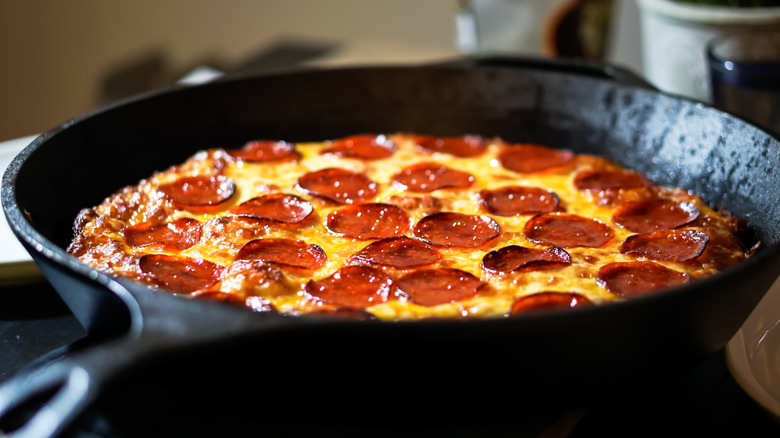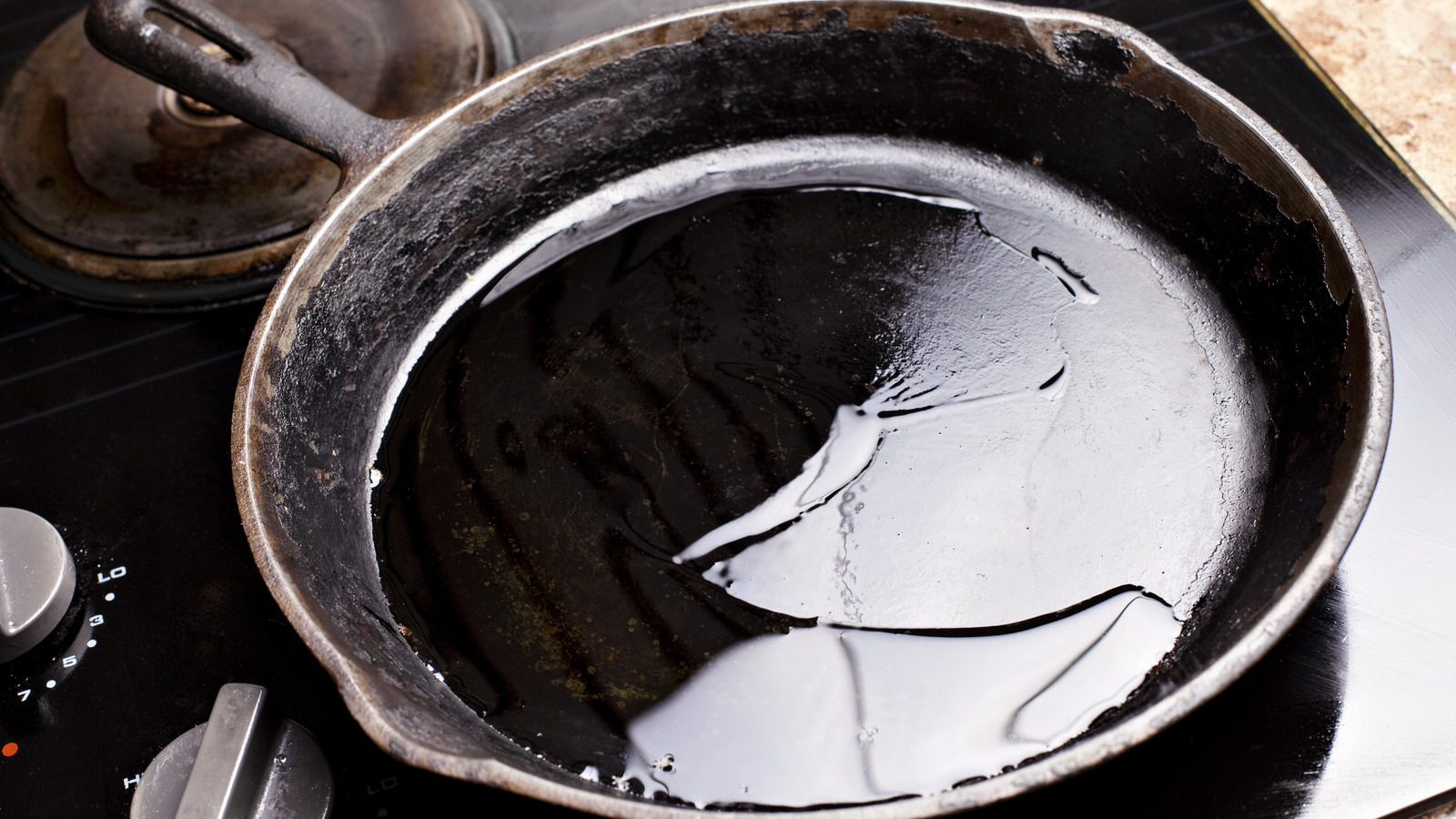Creating the beautiful, glossy patina that is synonymous with seasoning a cast iron skillet or pan involves a little culinary alchemy. To create that coveted non-stick surface that keeps your pan free of rust, most people reach for the bottle of olive oil that you probably have next to your stove for your day-to-day cooking; however, before you pour that first glug into your skillet, the only way to do it right is to make certain your bottle is extra-virgin olive oil. Why do you need EVOO for this task?
A quality EVOO is going to have a smoking point — the temperature at which your chosen fat starts burning and produces a white smoke — of 410 degrees Fahrenheit. EVOO’s smoking point is optimal because it is recommended that the oil you use for seasoning has a smoking above 400 degrees Fahrenheit. Not only that, per the Olive Oil Wellness Institute, a study was conducted and found EVOO to be the most stable oil to cook with, producing the lowest level of polar compounds. Polar compounds are the by-products of heated oil that have proven themselves to not only be unhealthy, but a factor in developing Alzheimer’s and Parkinson’s Disease.
Cast iron seasoning can break down

Why does the smoke point matter? If you plan on cooking anything that requires a heat temperature that is above your chosen oil’s smoking point, the seasoning is bound to atrophy, meaning you will have to re-season your cast iron pan more frequently. You will know you’ve exceeded this point if the smoke is gray, blue, or some other dark color.
To properly season your cast iron pan with EVOO, simply preheat your oven to 400 degrees Fahrenheit. Smear your skillet with this oil by dabbing a bit on a paper towel and painting it until it is nice and shiny. Pop your pan or skillet into your hot oven for 30 minutes. This process will season your cast iron and leave it in tip-top shape to use when you are ready to make your next Dutch baby with caramelized pears and toasted almonds or Ina Garten’s skillet-roasted lemon chicken.







